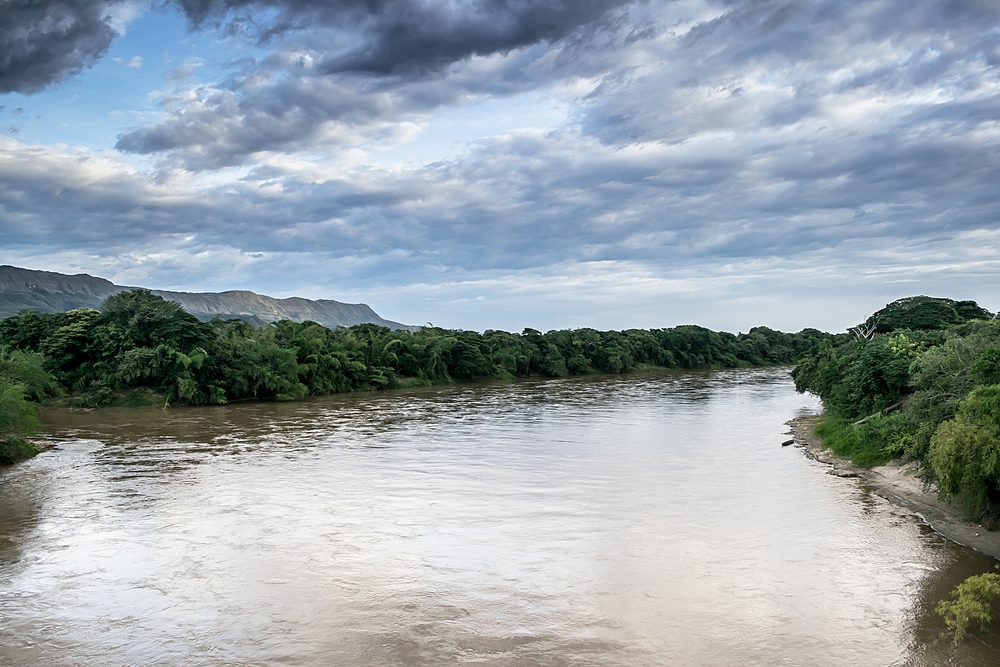Atrato River

The Atrato River is located in the northwest region of Colombia. It flows almost directly north to the Gulf of Urabá from the foothills of the Cordillera Occidental. The river flows as more than just a waterway—it serves as a sacred thread weaving together the rich tapestry of cultural diversity and heritage in the region. For centuries, the Atrato River has been a lifeline for indigenous communities, a source of inspiration for artists and musicians, and a symbol of resilience amidst social and environmental challenges. In this comprehensive exploration, we delve into the multifaceted layers of cultural importance that make the Atrato an integral part of Colombia’s identity and heritage.
Indigenous Connections and Traditions:
The Atrato River basin has been inhabited by indigenous communities such as the Emberá, Wounaan, and Afro-Colombian groups for thousands of years. For these communities, the river is not merely a source of sustenance—it is a spiritual entity deeply intertwined with their cultural beliefs, traditions, and way of life.
Indigenous rituals and ceremonies pay homage to the Atrato River as a deity, a giver of life, and a protector of their ancestral lands. Ceremonial offerings, music, and dance are performed along the riverbanks to honor the spirits and seek harmony with nature. The Atrato serves as a sacred space where communities gather to celebrate their cultural identity and pass down traditional knowledge to future generations.
Artistic Inspiration and Expression:
The natural beauty and biodiversity of the Atrato River basin have inspired artists, writers, and musicians throughout history. From vibrant paintings depicting the lush rainforests to haunting melodies evoking the rhythm of the river’s currents, the Atrato has served as a muse for creative expression across various art forms.
Afro-Colombian music, such as currulao and chirimía, often incorporates rhythms and themes inspired by the river’s flow and the rhythms of daily life along its banks. Visual artists capture the essence of the Atrato through paintings, sculptures, and installations that reflect its ecological importance and cultural significance. Writers and poets draw upon the river’s myths, legends, and folklore to explore themes of identity, belonging, and resilience in their literary works.
Historical Resilience and Identity:
The Atrato River basin bears witness to centuries of historical resilience and resistance against colonization, exploitation, and environmental degradation. Indigenous and Afro-Colombian communities have endured displacement, violence, and discrimination while steadfastly preserving their cultural heritage and connection to the land.
The river’s role in shaping Colombia’s history is evident in the struggles for land rights, environmental justice, and cultural recognition that continue to unfold along its banks. Grassroots movements, such as the Committee for the Defense of Water and the Atrato (CORDAT), advocate for the rights of marginalized communities and the protection of the river’s ecosystems against destructive development projects.
Environmental and Social Justice:
In addition to its cultural significance, the Atrato River plays a vital role in environmental conservation and social justice efforts in Colombia. The river basin is home to diverse ecosystems, including mangrove forests, wetlands, and freshwater habitats, that support a wealth of plant and animal species.
Environmental degradation, such as deforestation, pollution, and illegal mining, threatens the health and integrity of the Atrato ecosystem. Indigenous and Afro-Colombian communities, along with environmental organizations and civil society groups, are at the forefront of efforts to protect and restore the river’s natural resources.
Conclusion:
In conclusion, the Atrato River stands as a symbol of cultural resilience, artistic inspiration, and environmental stewardship in Colombia. Its significance extends beyond its waters, encompassing the diverse communities and ecosystems that depend on its vitality for their survival.
As we reflect on the cultural importance of the Atrato River, we are reminded of the interconnectedness of humanity and nature, and the imperative to honor and protect the cultural heritage of Colombia’s rivers for future generations. By recognizing the intrinsic value of the Atrato as a cultural and ecological treasure, we can work together to ensure its preservation and celebrate its enduring legacy in the fabric of Colombian society.
Know More about the Atrato River.
What are The Religious Places of the Atrato River?
When Did The Atrato River Basin Become a Focus?
Where is The Atrato River Located?
Who Were The Key Historical Figures and Civilizations of The Atrato River?
How to Reach Atrato River?




